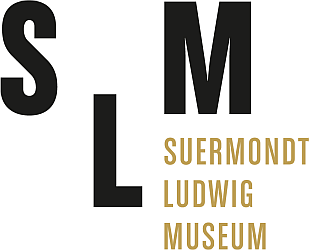Michael Triegel (*1968, Erfurt) is one of Germany’s leading contemporary artists. His oeuvre consists of monumental altarpieces, enigmatic still-lifes and subtle landscapes; he combines a masterful command of painting techniques with an intense engagement with art history. Inspired by paintings from the Italian Renaissance, Mannerism, and the Spanish Baroque, Triegel reimagines and interprets elements from ancient mythology, christianity, and broader cultural-history. By using the glazing techniques of the Old Masters to depict contemporary themes, Triegel crafts an imagery that feels both timeless and strikingly modern: “My game is precisely to assert the old master at first glance – and then to pull the rug out from under that first impression as much as possible.”
The Aachen exhibition showcases the entirety of Triegel’s expressive range: from large-scale works of the 1990s to his latest piece, Young Man from Procida (2025), which unites medieval pictorial traditions, surviving religious practices, and contemporary portraiture. This exhibition offers a unique opportunity to experience the multifaceted oeuvre of this extraordinary contemporary artist at its fullest. It highlights not only his unique command of technique but also his ability to depict complex themes in a way that feels both traditional and provocative.
Among the highlights of the exhibition are the Portrait of Pope Benedict XVI (2010) and the controversial design for the central panel of the Cranach altar in Naumburg Cathedral (2022).
Sublime and Morbid Beauty
Triegel’s watercolors of Italian and British landscapes follow the tradition of artists such as Dürer and Turner. His still lifes play with the formal allure of shimmering surfaces and morbid elements. At the same time, the motifs are enriched with deeper meanings, pointing from the visible to an invisible level of interpretation, inviting contemplation on the transience of life and beauty.
Michael Triegel in Aachen’s “Salon”
The Suermondt-Ludwig Museum, with its rich collection of European art – from late Gothic sculptures to masters of the Flemish and Spanish Baroque – provides the perfect setting for Triegel’s inherent dialogue between tradition and modernity. The museum invites visitors to explore its collection and a fascinating cabinet of art and curiosities in the historic ambiance of a magnificent city palace.
An accompanying catalog will be published by Hirmer Verlag.
Wibke Vera Birth
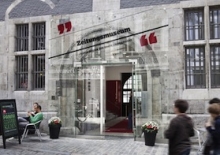
Medienmuseum, Wechselausstellungen und eine Sammlung von 200.000 Zeitungen und Druckwerken in nahezu allen Sprachen.
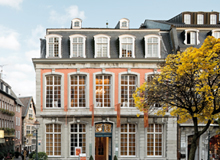
Das bekannteste Wohnzimmer Aachens, mit anschaulichen Einblicken in die Wohnkultur des 18. und frühen 19. Jahrhunderts.
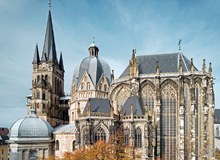
UNESCO-Weltkulturerbe mit herausragender künstlerischer Ausstattung: Karlsschrein, aufwändigen Mosaiken, einer goldenen Altartafel.
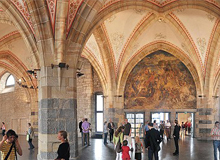
Die größten Historienbilder der Romantik, originalgetreue Kopien des Säbels Karls des Großen, einer karolingischen Handschrift, der Reichskrone.
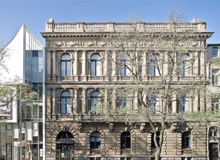
Kunst von der Gegenwart bis in die Antike, mit hervorragenden Gemälden und Skulpturen des Spätmittelalters sowie der Malerei des 17. Jhs.
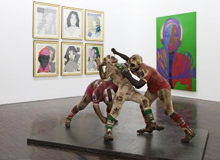
Schauplatz für zeitgenössische Künstler und Kunstwerke, Begegnungsstätte darstellender und bildender Kunst, Bestände der Sammlung Ludwig.
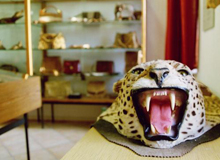
Lebendiges Zentrum zur Erinnerung der Grenzgeschichte und -geschichten, mit verbotenen Souvenirs und Schwarzbrennerei.
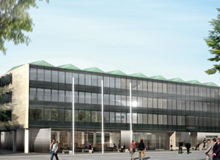
Eröffnung 2014 – Lebendige Geschichte von den Karolingern bis heute. Ausgangspunkt der Route Charlemagne am historischen Katschhof.

Stolz blicken die Aachener auf ihre Geschichte als römische Bäderstadt und Kaiserresidenz Karls des Großen zurück. Der Dom, 1978 zum ersten UNESCO Weltkulturerbe in Deutschland ernannt, und das Rathaus bilden den Mittelpunkt der Stadt. In den Gassen der Altstadt erzählen viele historische Gebäude von der lebhaften Geschichte der Stadt, und doch ist die Zeit nicht stehen geblieben.
An der „Eliteuni“ RWTH Aachen und den anderen Hochschulen sind rund 40.000 Studenten eingeschrieben. Das junge Leben pulsiert vor allem im Pontviertel, dem beliebten Ausgehviertel mit seinen zahlreichen Cafés, Kneipen und Restaurants. Doch auch in den Gassen und auf den Plätzen der Altstadt ist immer viel los. Rund um Dom und Rathaus laden zahlreiche Einzelhändler ebenso wie Filialen namhafter Häuser zum Bummeln ein.
Quelle allen Ruhms ist das Wasser: Die Heilkraft der heißen Thermalquellen war ausschlaggebend dafür, dass Kaiser Karl Aachen zu seiner Lieblingsresidenz machte. Die Badetradition wird heute durch die Carolus Thermen Bad Aachen weitergeführt.
Wer sich lieber in der Natur entspannt, hat dafür zahlreiche Möglichkeiten, etwa im nahe gelegenen Nationalpark Eifel. Zudem locken mehrere Theater und Museen mit einem vielschichtigen Angebot.

